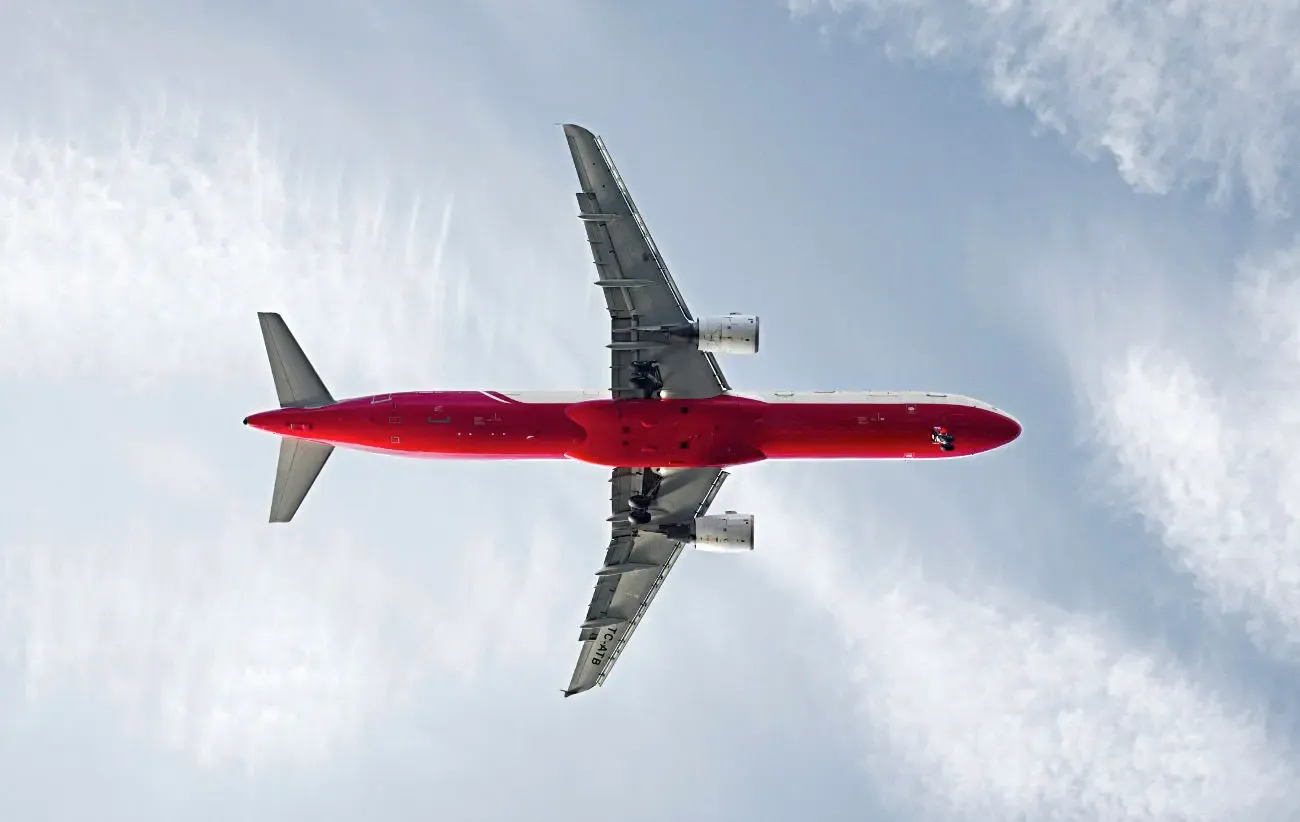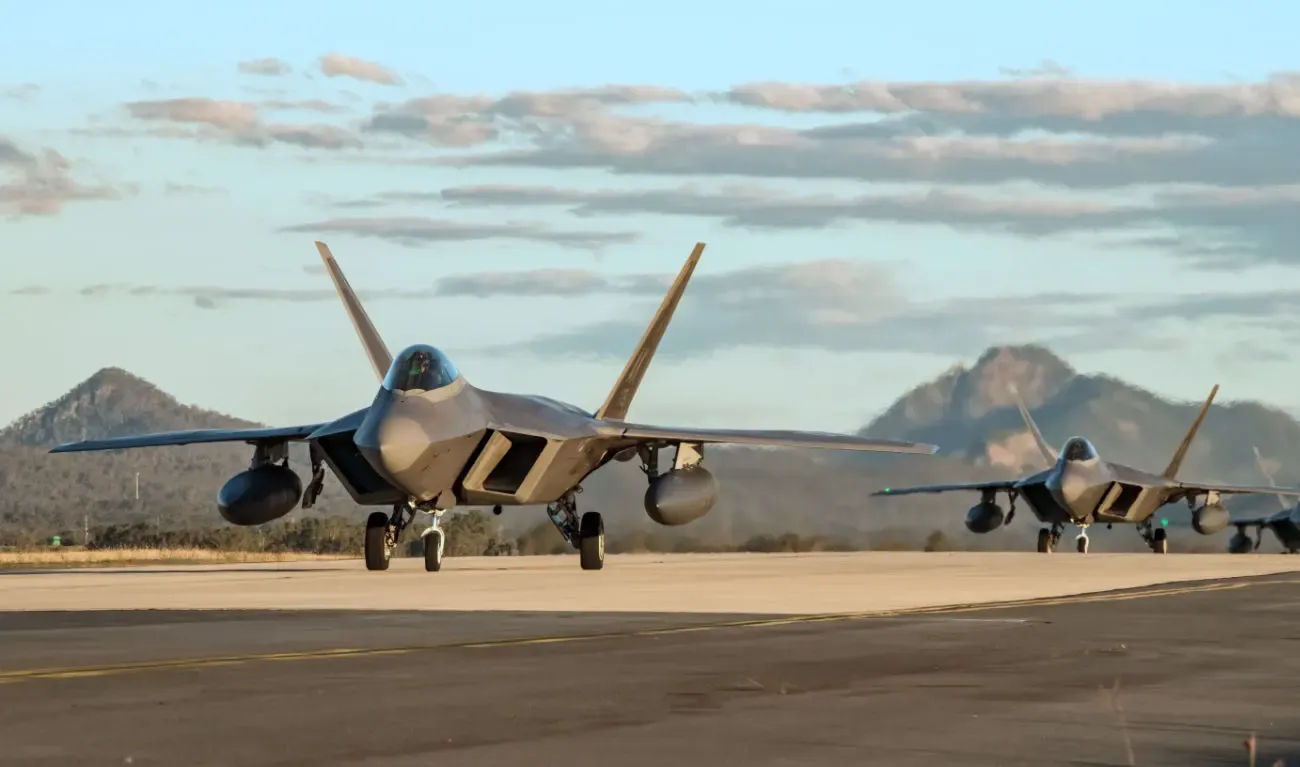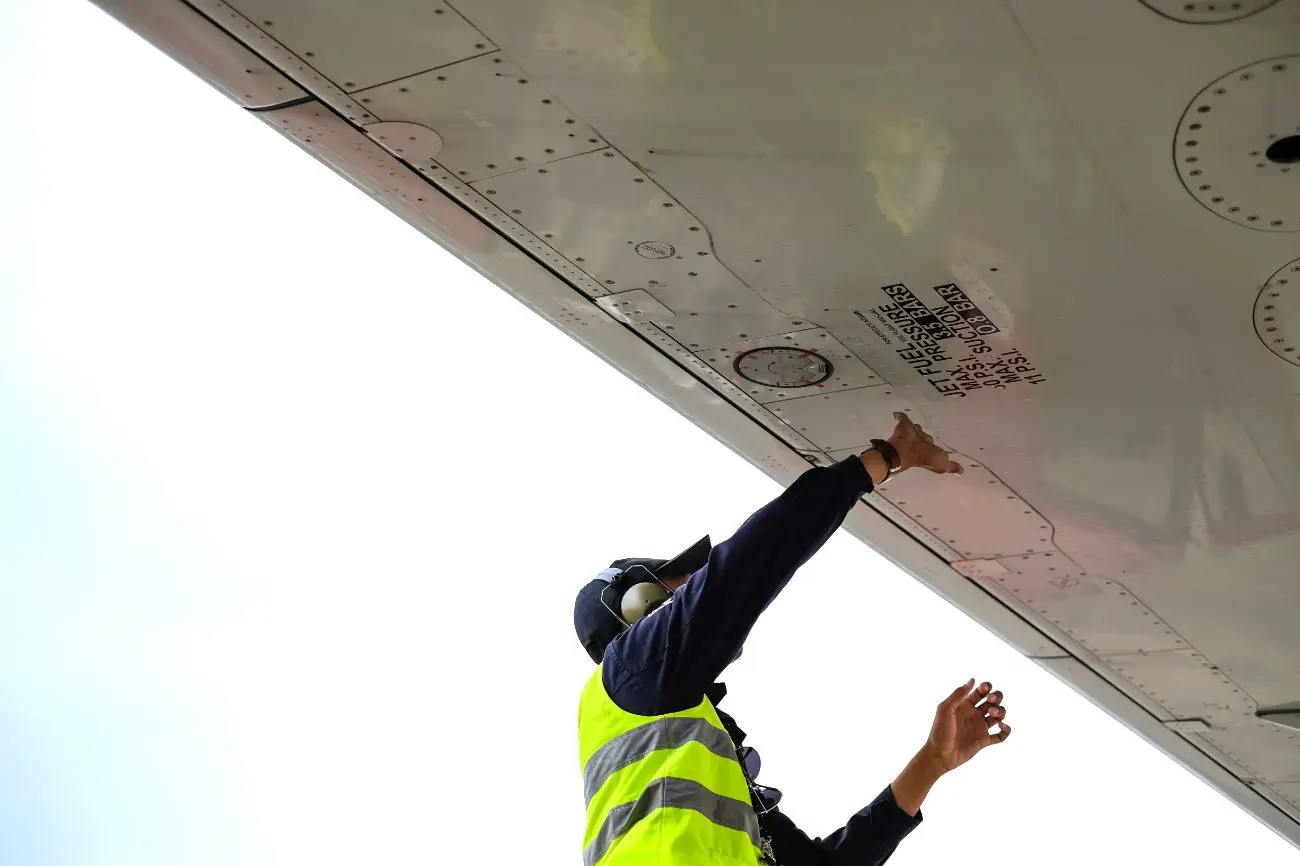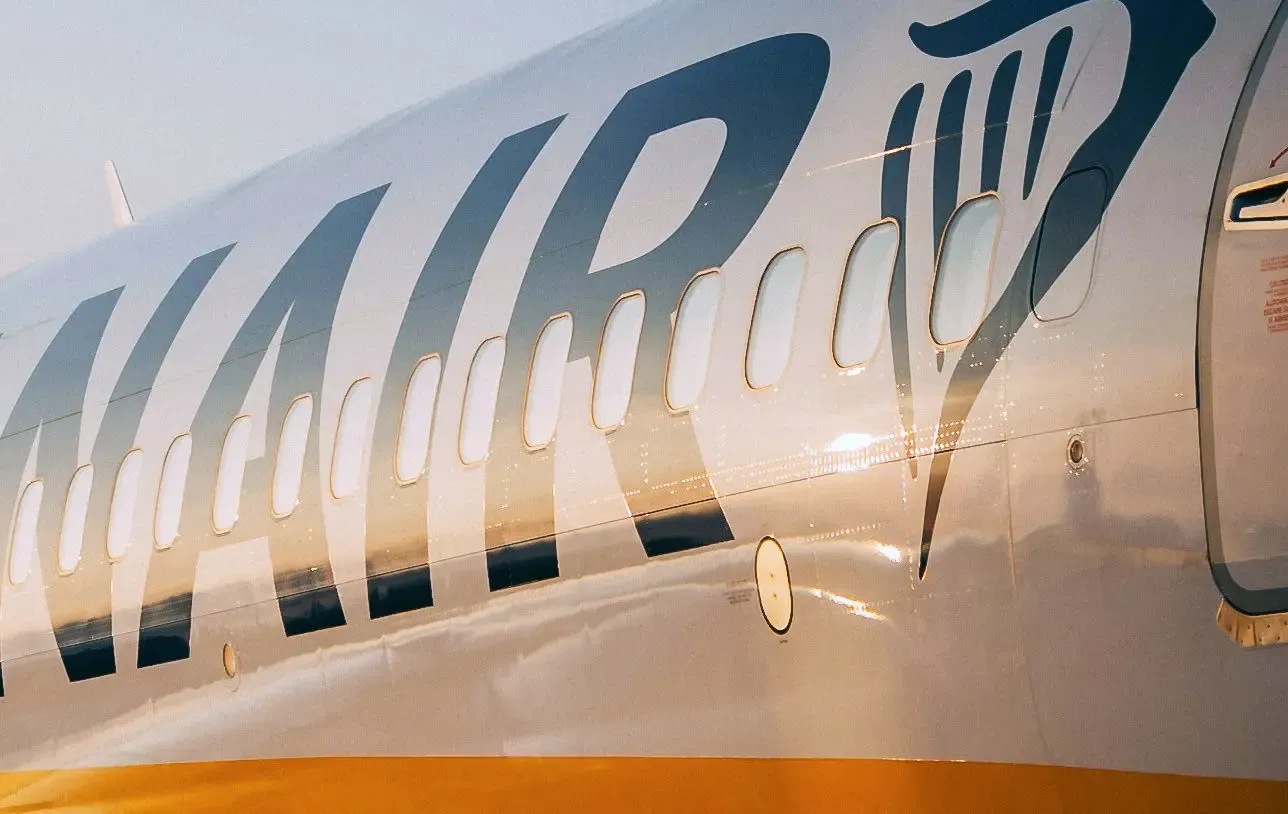
Where Do Planes Store Fuel: An In-Depth Look
Planes mainly store fuel in their wings, which are specially designed to hold and distribute the fuel efficiently during flight. Learn more about where planes store fuel.
Table of Contents
Planes are remarkable feats of engineering, capable of carrying passengers and cargo across continents at incredible speeds. But have you ever wondered where all the fuel that powers these flying machines is stored?
Aircraft fuel tanks are crucial components that play a vital role in the operation of an airplane. In this blog post, we will take an in-depth look at the different ways planes store fuel and how advancements in technology have shaped the evolution of aircraft fuel storage systems.
The Basics of Aircraft Fuel and Fuel Tanks
At the core of every flight lies the capability to store and manage jet fuel, a highly refined type of kerosene that via the plane's engines propels the aircraft. The fuel is housed within the aircraft's fuel tanks, integrated into the wings and, in some cases, the fuselage. These fuel tanks are engineered to precision, ensuring they can safely accommodate the necessary volume of fuel for the aircraft to complete its journey efficiently.
The placement of fuel tanks within an aircraft is a deliberate choice, aimed at preserving the plane's balance and aerodynamic efficiency while maximizing the fuel capacity and therefore the aircraft's range. In the wings, the fuel serves a dual purpose—not only does it power the aircraft, but its positioning also aids in maintaining the structural integrity of the wings during flight.
Fuel tanks are built to be robust, and capable of withstanding the pressures and extreme temperature changes encountered during flights while preventing any risk of leakage or unintended combustion. The design and material of these tanks have evolved, with modern aircraft increasingly turning to lighter and stronger materials to enhance fuel efficiency and safety.
One might not often consider the complexity of fuel storage when boarding a plane, yet it is one of the most critical aspects of aircraft design. Ensuring that these tanks are secure, leak-proof, and efficiently integrated into the aircraft's structure requires meticulous engineering and rigorous testing.
This system's reliability allows for the safe storage and usage of fuel, directly impacting the aircraft's performance, structural behavior, range, and the safety of everyone on board.
The Role of the Wings in Fuel Storage
Most of an airplane's fuel is stored in its wings. This is not merely a matter of convenience; it is a strategic design decision that significantly contributes to the airplane's efficiency and safety. The wings serve a multi-functional role, not only generating lift during flight but also acting as critical fuel storage areas. This use of space allows for the distribution of fuel weight across a broad area, maintaining the aircraft's balance and enhancing its aerodynamic performance.
Fuel is heavy, and it is beneficial to place this weight inside the airplane's wings since it concentrates the weight closest to the source of lift. For an airplane to generate lift, air must flow around its wings, and the fuel's weight eases the strain on the wings when in flight. When the wing generates lift, the bend upwards. The fuel's weight counters this, thereby reducing the structural strain and wing flutter.

An aircraft's wings are most often located at its center of gravity. When the wings are filled with fuel, it also means that the weight is concentrated precisely in the plane's center of gravity. The aircraft may become unbalanced if weight is applied to the front or back of the craft. As the fuel is consumed during a flight, the balance and handling characteristics of the airplane change. Advanced systems are in place to manage these shifts, ensuring the flight remains smooth. This dynamic aspect of fuel storage within the wings underscores the complexity and precision required in aircraft design and operation.
Moreover, integrating fuel tanks into the wings allows for easy fueling and maintenance inspections, streamlining the process and ensuring that safety protocols are rigorously followed. However, these fuel tanks cannot be taken out for maintenance or inspection because they are a structural component of the aircraft. To facilitate internal inspection, maintenance, and general service of the tank, inspection panels must be available.
The design of wing fuel tanks is a sophisticated process, requiring careful consideration of the aircraft's overall weight distribution and center of gravity. By placing large quantities of fuel within the wings, engineers can effectively manage the plane's balance, ensuring that it remains stable and maneuverable at various stages of flight. The placement also minimizes the impact on the passenger and cargo areas, maximizing space efficiency within the aircraft's fuselage.
The Use of Fuselage Tanks
While the wings are the primary storage location for fuel in most airplanes, the use of fuselage tanks presents an additional method for housing this vital resource, particularly in larger aircraft with higher fuel demands.
Center tanks, located centrally within the fuselage, between the wings, these tanks offer a supplementary fuel reserve, essential for long-haul flights that exceed the capacity of wing tanks alone. The strategic placement within the fuselage not only contributes to the aircraft's fuel capacity but also aids in maintaining optimal weight distribution and balance as fuel levels fluctuate during flight.
On aircraft with center tanks, the fuel in these will be used first. This is because the lift generated by the wings must be transferred to the fuselage through the wing root. So, to ease the structural stress between the wing and the wing root as early in the flight as possible, the fuel in the center tank is used first.

Another fuselage tank called a trim tank, is typically located in the tail assembly of long-haul aircraft. To compensate for the weight and balance shifts during flight, fuel can be transferred to and from the trim tanks. This helps stabilize and balance the plane during flight.
Although fuselage tanks are not the primary fuel storage, they exemplify the flexibility and adaptability in aircraft design, allowing for extended range capabilities and flight balancing.
External Fuel Tanks on Military Aircraft
Military aircraft, particularly fighter jets, have unique requirements when it comes to fuel storage that distinguish them from commercial airplanes.
To enhance their range and mission endurance without compromising performance, these aircraft often utilize external fuel tanks in addition to the internal tanks located in the fuselage and wings.
These external tanks, commonly referred to as fuel drop tanks, provide a significant advantage by carrying additional fuel that can be jettisoned when empty or if the aircraft needs to reduce weight for combat maneuvers.

This ability to discard the extra weight allows fighter jets to maintain optimal aerodynamic properties and speed, essential for mission success and pilot safety. The use of fuel drop tanks is a strategic solution that address the challenges of fuel storage and management while ensuring aircraft remain agile and combat-ready.
However, on fighter aircraft where stealth is essential, for example, the Lockheed Martin F-22 Raptor air superiority fighter, the use of fuel drop tanks compromises the aircraft's stealth advantage. This disadvantage, however, is minimized by the fact that the tanks can be dropped when stealth is an important mission parameter.
Exploring Alternative Fuel Storage Options
As the aviation industry looks to the future, the quest for innovative fuel storage solutions becomes increasingly vital.
Among the developments, the integration of composite materials into the construction of aircraft fuel tanks stands out. These materials, characterized by their lightweight and robust nature, enable the design of fuel tanks that are lighter than their traditional metal counterparts. This weight reduction directly contributes to an increase in fuel efficiency.
Another forward-looking approach involves the exploration of flexible fuel tanks. Unlike rigid tanks, these flexible systems can adapt to the unique contours of an aircraft's structure, optimizing space that would otherwise go unused. This adaptability allows for an augmented fuel capacity without compromising the aircraft's design or aerodynamics. Furthermore, the potential for flexible tanks to be incorporated into various parts of the aircraft opens up new avenues for enhancing fuel distribution and balance, contributing to better overall performance.
The drive towards alternative fuel storage options also intersects with efforts to minimize the aviation industry's carbon footprint. For instance, the exploration into more efficient fuel storage aligns with the development of sustainable aviation fuels (SAFs) that promise lower emissions. As the industry embraces these innovations, the synergy between advanced fuel storage technologies and eco-friendly fuel alternatives could pave the way for a greener, more sustainable future in air travel.
Managing Fuel Efficiency and Safety
Navigating the dual priorities of fuel efficiency and safety is paramount in the aviation industry. Teams on the ground and in the cockpit employ rigorous strategies to monitor and control fuel use, ensuring that every flight not only conserves fuel but also adheres to the highest safety standards.
A cornerstone of this process is the precise calculation of fuel requirements for each journey, considering factors such as distance, weather conditions, payload, and potential alternate routes. This meticulous planning guarantees that the aircraft carries sufficient fuel for its intended route plus reserves for unforeseen circumstances.

Moreover, the aviation industry has developed sophisticated fuel management systems that provide real-time data on fuel consumption rates and remaining fuel levels. These systems empower pilots with the information needed to make informed decisions regarding speed, altitude, and route adjustments to optimize fuel efficiency during flight.
On the aircraft itself, the fuel tanks are specifically designed to be resistant to sparks or other sources of ignition. The tanks are typically made of strong, non-flammable materials and are designed to be as secure as possible to prevent leaks or spills.
Additionally, aircraft fuel systems are designed to minimize the chances of accidental ignition. This includes the use of flame arrestors, which are devices that prevent flames from spreading back into the fuel tanks, as well as the use of safety valves and other mechanisms to regulate the flow of fuel and prevent accidents.
In the very rare event of an emergency, aircraft are equipped with various safety features, such as fire detection and suppression systems, to quickly and effectively respond to any potential ignition risks.
Safety protocols surrounding fuel handling are equally critical. Stringent guidelines ensure that refueling is conducted under conditions that minimize the risk of spills or fires. Training for ground crew and pilots encompasses best practices for fuel management, including emergency procedures in the unlikely event of a fuel-related accident.
Conclusion
In conclusion, planes store fuel in various locations within the aircraft, depending on the type of aircraft and its design. The most common locations include the wings, fuselage, and tail of the plane.
The fuel tanks are carefully monitored and maintained to ensure the safety of passengers and crew during flight. Airlines and aviation authorities must adhere to strict safety regulations when it comes to fuel storage and handling to minimize the risk of accidents.
Also read:
Planenerd Newsletter
Join the newsletter to receive the latest updates in your inbox.






